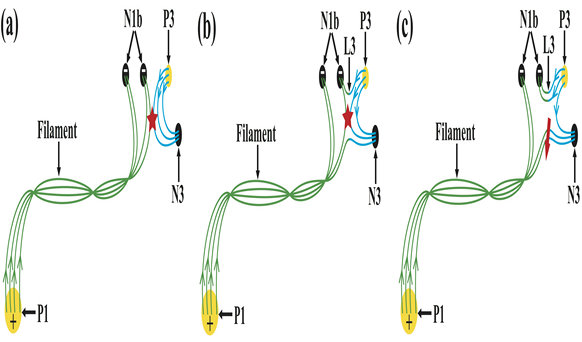Scientists Reveal the Magnetic Reconnection Details Triggering Filament Eruption
Successful eruption of a solar filament produces a coronal mass ejection (CME), which is a major driver for space weather. To understand how the filament erupts is, therefore, essential for the space weather forecast.
Both observations and simulations suggest that the filament eruption is closely related to magnetic flux emergence. It is thought that the eruption is triggered by magnetic reconnection between the filament and the emerging flux. However, the details of such a reconnection are rarely presented.
Recently, a research team led by Dr. Leping Li from the National Astronomical Observatories of the Chinese Academy of Sciences (NAOC) revealed the details of reconnection between a filament and its nearby emerging fields, which led to the reconfiguration and subsequent partial eruption of the filament.
This new study was published in The Astrophysical Journal on August 20.
In the active region (AR) NOAA 12816, a filament was located over the polarity inversion lines on 2021 April 21. Near the northwestern endpoints of the filament, magnetic fields emerge, and reconnect with the filament, forming the newly reconnected filament and loops (see Figure below).

Figure: Schematic diagrams of the reconfiguration and eruption of the filament by magnetic reconnection with the emerging magnetic field. (Image by LI Leping)
A current sheet repeatedly occurs at the interface of the filament and its nearby emerging fields. "In order to understand the detailed reconnection, some parameters of the current sheets, such as the length, width, reconnection rate, temperature, emission measure, and electron number density, are then measured," said Dr. Leping Li, who is the first author of this study.
Bright plasmoids form in the current sheet, and propagate along it bidirectionally, and further along the newly reconnected filament and loops. "This result indicates the presence of plasmoid instabilities during the reconnection process," said Prof. Hardi Peter from Max-Planck Institute for Solar System Research (MPS), who is a co-author of this study.
The newly reconnected filament then erupts, while the unreconnected filament remains stable. The filament thus only partially erupts. "These results suggest that only the reconnection-favored orientation of the emerging fields near the filament may not result in the eruption of the whole filament," said Dr. Li. "Some other parameters, such as the position, distance, strength, and area, are also crucial for triggering the filament eruption."
The paper can be accessed at https://iopscience.iop.org/article/10.3847/1538-4357/ac7ffa